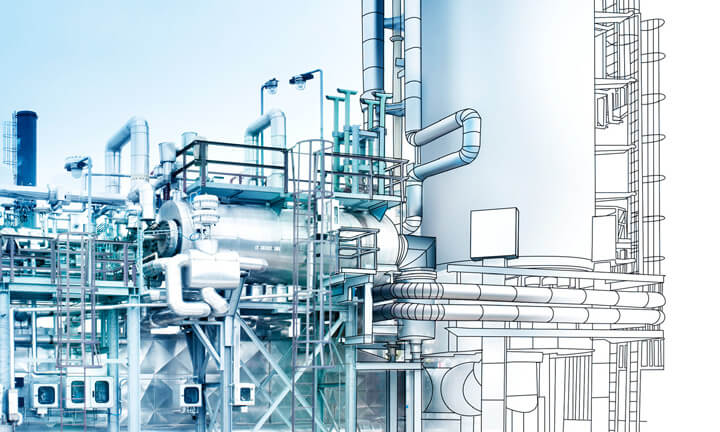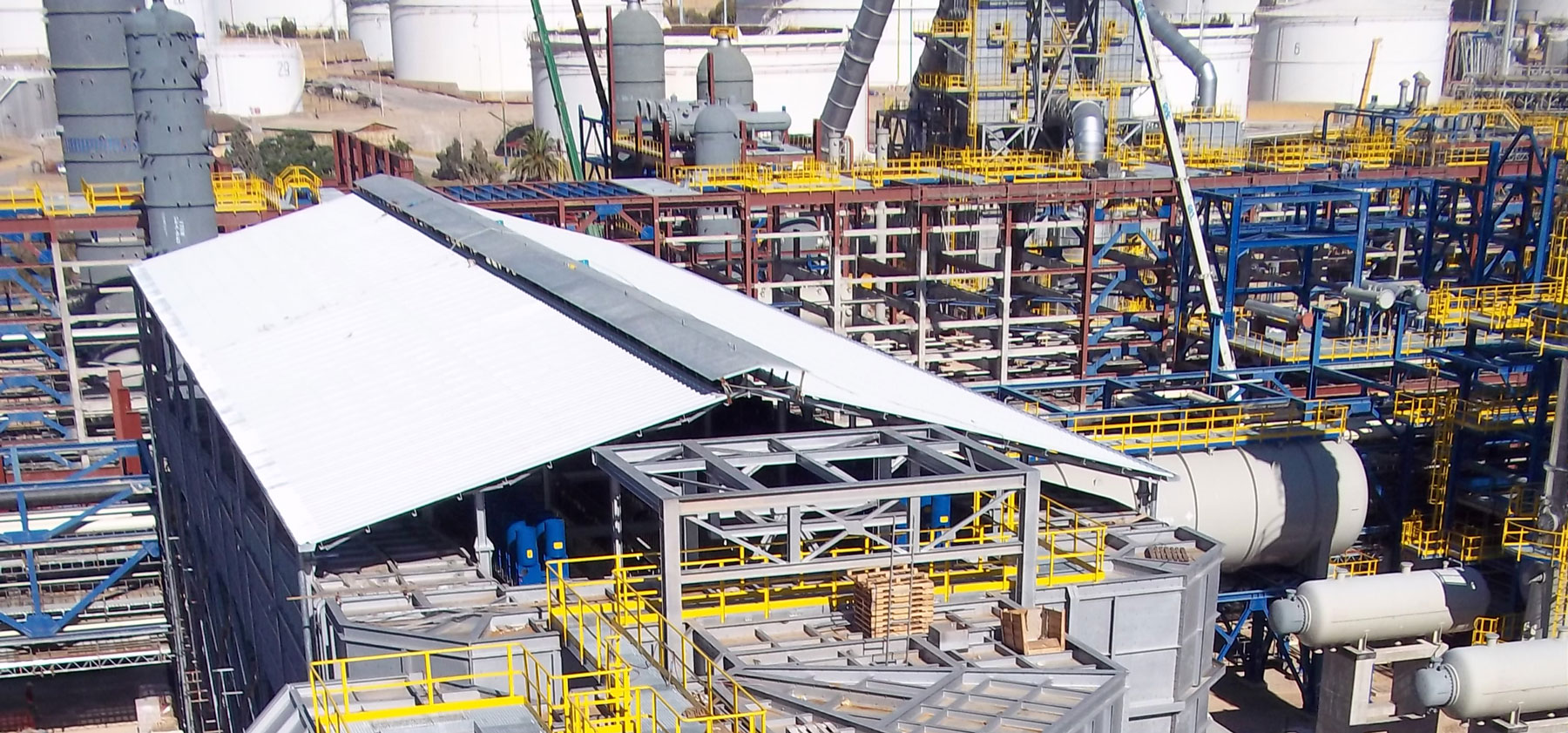What is Steam Methane Reforming (SMR)?

Most of the hydrogen produced all over the world is made by methane reforming using higher-pressure steam in large central plants. In the USA alone 95% of its hydrogen production is coming from steam methane reforming which is commonly abbreviated as SMR. Steam methane reforming (SMF) is a chemical process where methane which is predominantly available in natural gas is reacted with steam under 3-25 bar pressure and high temperature (700°C–1,000°C) in the presence of a catalyst system. Two parallel reactions have been identified in steam methane reforming. Not only natural gas but, refinery off-gas, liquefied petroleum gas or naphtha and such C,H sources can be utilized in this process. Therefore reforming is the predominantly used method in the production of hydrogen where 78% of the world's hydrogen is coming through it. When it comes to methane reforming it accounts for 48% of while other resources are being reformed to obtain a 30% of the world's hydrogen. The efficiency of the steam reforming process is about 65% to 75%, among the highest of current commercially available production methods.
Steam Methane Reforming Reaction:
- The name-giving reaction - Steam-Methane Reforming Reaction where methane gets converted to carbon monoxide and hydrogen by reacting with steam under high pressure and temperature with the presence of a catalyst in a steam methane reformer unit.
CH4 + H2O (+heat) → CO + 3H2
What catalysts are used in steam methane reforming process? Most industrial SMR catalysts are based on using nickel as the catalytic component which is a cost-effective selection, although expensive platinum group metals (pgms) such as Pt and Rh are used for some specific duties.
2. Water-Gas Shift Reaction where carbon monoxide gets converted to carbon dioxide and more hydrogen by reacting with steam under high pressure and temperature.
CO + H2O → CO2 + H2 (+small amount of heat)
In addition to these two reactions; the direct steam reforming (DSR) reaction is also present there where methane gets directly converted to carbon dioxide and hydrogen by reacting with steam under high pressure and temperature.
CH4 + H2O → CO2 + H2
The efficiency of the steam reforming reaction is about an average of 70% and it is a considerably higher value among current commercially available production methods. SMR gives a mixture of carbon dioxide and hydrogen as the produce where carbon dioxide and other impurities are removed in the purification step.
Product and Application of Steam Methane Reaction
The output streams of the SMR process consist of hydrogen gas, the desired product for a multitude of industrial applications, including ammonia production, refineries, fuel cells, hydrogenation reactions, and energy storage. However, the process also generates carbon dioxide, a byproduct that needs to be effectively separated and captured for environmental reasons, and carbon monoxide, which must be minimized to ensure high-purity hydrogen.
The catalytic bed relies on nickel-based catalysts to facilitate the reforming reaction, making catalyst efficiency a critical factor in the overall success of SMR. Operating conditions are demanding, with high temperatures required for the endothermic reforming reaction and typical operation at elevated pressures ranging from 20 to 30 bar.
Energy sources in SMR include natural gas, serving as the heat source for the reforming reaction, and electricity, which powers various auxiliary equipment such as pumps and compressors. The ultimate goal of SMR is to produce high-purity hydrogen for a diverse range of applications, spanning ammonia production, refineries, fuel cells, hydrogenation reactions, and energy storage.
Challenges within the realm of SMR include the imperative need for carbon capture and storage (CCS) to mitigate carbon dioxide emissions. Efficient catalysts and process optimization play a critical role in enhancing the overall efficiency and environmental sustainability of SMR. Nevertheless, SMR also boasts several advantages, including high hydrogen yield and the utilization of abundant natural gas resources.
While offering a promising path towards a hydrogen-based future, SMR is not without its environmental challenges, as it generates carbon emissions and necessitates the implementation of carbon capture technologies. The research and innovation in this field continue to progress, with ongoing developments in catalysts and process improvements to address these challenges and further refine the efficiency of SMR.
How is carbon dioxide removed in the steam methane reforming reaction?
Pressure-swing adsorption is commonly used here to obtain CO2 free pure hydrogen stream. Due to the environmental impact of carbon dioxide; carbon capture and utilization/storage in steam methane reforming is being promoted. So in such a system, CO2 which is separated from the product stream will be subjected to more processing to be utilized or stored.
Purified hydrogen will be utilized in many industries such as refineries, ammonia production, the metal industry, the glass-making industry, the cement industry, transportation and building heating.
The following companies are the leading steam methane reformer manufacturer in the industry
● Honeywell UOP
Honeywell UOP is a leader in hydrogen purification. They initiated providing hydrogen processing solutions with the first industrial installation of Pressure Swing Adsorption (PSA) in 1966. Since then more than 10000 Honeywell UOP PSA systems have been installed or designed worldwide accounting for p 25 million Nm³/h purification capacity for pure H2.

● Air Liquide
Unlike Honeywell UOP, Air Liquide Engineering & Construction provides a complete solution for Steam Methane Reforming (SMR) technology for hydrogen production on both a small and large scale including desulfurized hydrocarbon feedstock, reactions and separation of hydrogen through in-house Pressure Swing Adsorption purification technology.

● Linde
Linde is the only hydrogen plant supplier with proprietary technology for steam reforming and hydrogen purification which enables them to provide sustainable solutions to customers by seamlessly integrating and optimising the entire steam methane reforming plant, from feed pre-treatment through purification.

● Air Products and Chemicals
Air Products provides highly efficient steam methane reforming plants that produce hydrogen in volumes ranging from 1000 to 175 MM standard cubic feet per day. They are the world’s leading hydrogen supplier with the technologies and experience to develop optimized systems to generate gaseous hydrogen under an on-site agreement or purchase the hydrogen plant as a turnkey solution. They have customers in over 40 countries who count on their total systems.
https://www.airproducts.com/applications/syngas-solutions/gaseous-hydrocarbons
● Caloric Anlagenbau GmbH

● KBR
KBR offers unique Steam Methane Reforming (SMR) technology which is commercially well-proven and reliable to leverage economy of scale and expand single-train production capacity using industry-standard equipment sizes and catalysts.
https://www.kbr.com/sites/default/files/2022-02/KBR-Blue-Hydrogen_Brochure.pdf
● Heurtey Petrochem

● McDermott

● Haldor Topsoe

● thyssenkrupp

● Toyo Engineering Corporation








